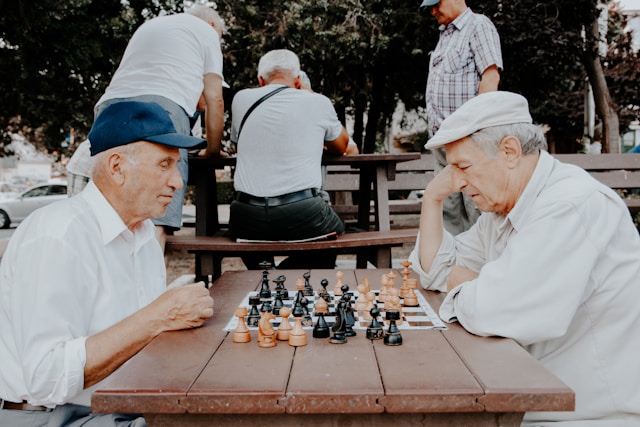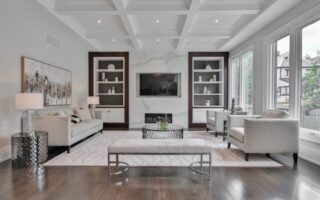Key Takeaways:
- Understanding the key components that contribute to active senior lifestyles.
- Identifying design features that enhance community engagement and wellness.
- Integrating accessibility and safety within aesthetically pleasing environments.
Table of Contents:
- Fostering Social Connections Through Community Design
- Integrating Wellness: The Role of Fitness and Health Facilities
- The Importance of Accessibility and Mobility in Community Layouts
- Nature and Serenity: Creating Outdoor Spaces for Active Seniors
- Smart Tech Integration: Making Homes Senior-Friendly
- Cultural and Educational Opportunities Within Senior Living Spaces
- Building for Future Needs: Flexible Spaces for the Aging Population
The new wave of senior living focuses heavily on nurturing an environment conducive to an active and dynamic lifestyle. The traditional image of retirement living is being shed in favor of vibrant communities that support the ongoing pursuit of wellness, intellectual stimulation, and social connection. Innovative senior living communities Toms River and other areas lead the charge, reflecting this modern approach to aging.
Fostering Social Connections Through Community Design
One fundamental goal in the design of senior communities is the creation of spaces that nurture social relationships. The layout of these communities often includes common areas designed to bring residents together for shared activities. For instance, strategically placed seating in gardens encourages casual conversation, while community event calendars filled with gatherings and special events provide structured opportunities for social interaction. Hallmarks of these design strategies are comfortable, open-spaced lounges and multipurpose rooms that host activities from book clubs to dance sessions, fostering a sense of belonging and camaraderie among residents.
Integrating Wellness: The Role of Fitness and Health Facilities
Maintaining physical health is paramount for seniors’ independence and quality of life. Well-designed fitness and health facilities are thus cornerstone features in modern senior communities, providing venues for everything from water aerobics to yoga specifically tailored to senior citizens. Providing on-site amenities makes regular exercise more accessible and less daunting, encouraging a wellness routine. Furthermore, these facilities often utilize specialized equipment designed to reduce strain on joints and increase stability, accommodating the physical considerations associated with aging.
The Importance of Accessibility and Mobility in Community Layouts
Accessible design is not a luxury but a necessity in senior living communities. Designers focus on creating environments that allow freedom of movement for all, with features such as no-step entries, accessible bathroom fixtures, and elevators. These design elements support the independence of seniors, reassuring them that their mobility needs are met with dignity and convenience. Achieving this requires adherence to well-established standards and guidelines, ensuring that these spaces are safe, comfortable, and empowering for residents to remain active and engaged.
Nature and Serenity: Creating Outdoor Spaces for Active Seniors
Biophilic design, which brings nature into everyday spaces, is especially beneficial in senior communities. Outdoor spaces, with their fresh air and greenery, immensely benefit physical and mental well-being. Thoughtful landscaping, including wheelchair-accessible paths, community gardens, and tranquil ponds, encourages seniors to spend time outdoors, linked to improved mood, better sleep quality, and reduced stress levels. These serene environments inspire physical activity, such as walking or gardening, and serve as peaceful retreats for contemplation and social interaction in the fresh outdoors.
Smart Tech Integration: Making Homes Senior-Friendly
Technology integration is revolutionizing senior living, making homes more adaptive, safe, and user-friendly for the aging population. Innovations such as voice-activated assistance systems, automated climate control, and personal emergency response systems provide seniors with security and autonomy. These technologies are designed with the user in mind, emphasizing simplicity and accessibility to ensure that tech-savvy and less technologically inclined residents can benefit from the digital comforts and safety features they provide.
Cultural and Educational Opportunities Within Senior Living Spaces
An engaging senior living community offers more than just physical amenities; it also nurtures the mind. Facilities often include libraries, art studios, and lecture halls where residents can partake in educational courses and cultural experiences. This focus on lifelong learning allows seniors to continue expanding their knowledge and participating in their interests, which can be both stimulating and rewarding. Senior communities encourage residents to remain active learners and culturally connected individuals by fostering an environment where education and personal growth are celebrated.
Building for Future Needs: Flexible Spaces for the Aging Population
Today’s senior living communities are designed with an eye toward the future, ensuring that as residents’ needs evolve, the environment can adapt accordingly. This is accomplished through flexible design strategies that allow for easy modifications to living spaces, providing different levels of care as needed. By building with adaptability, communities can offer a range of care, from independent living arrangements to more supportive environments, allowing residents to age in place with grace and comfort.



